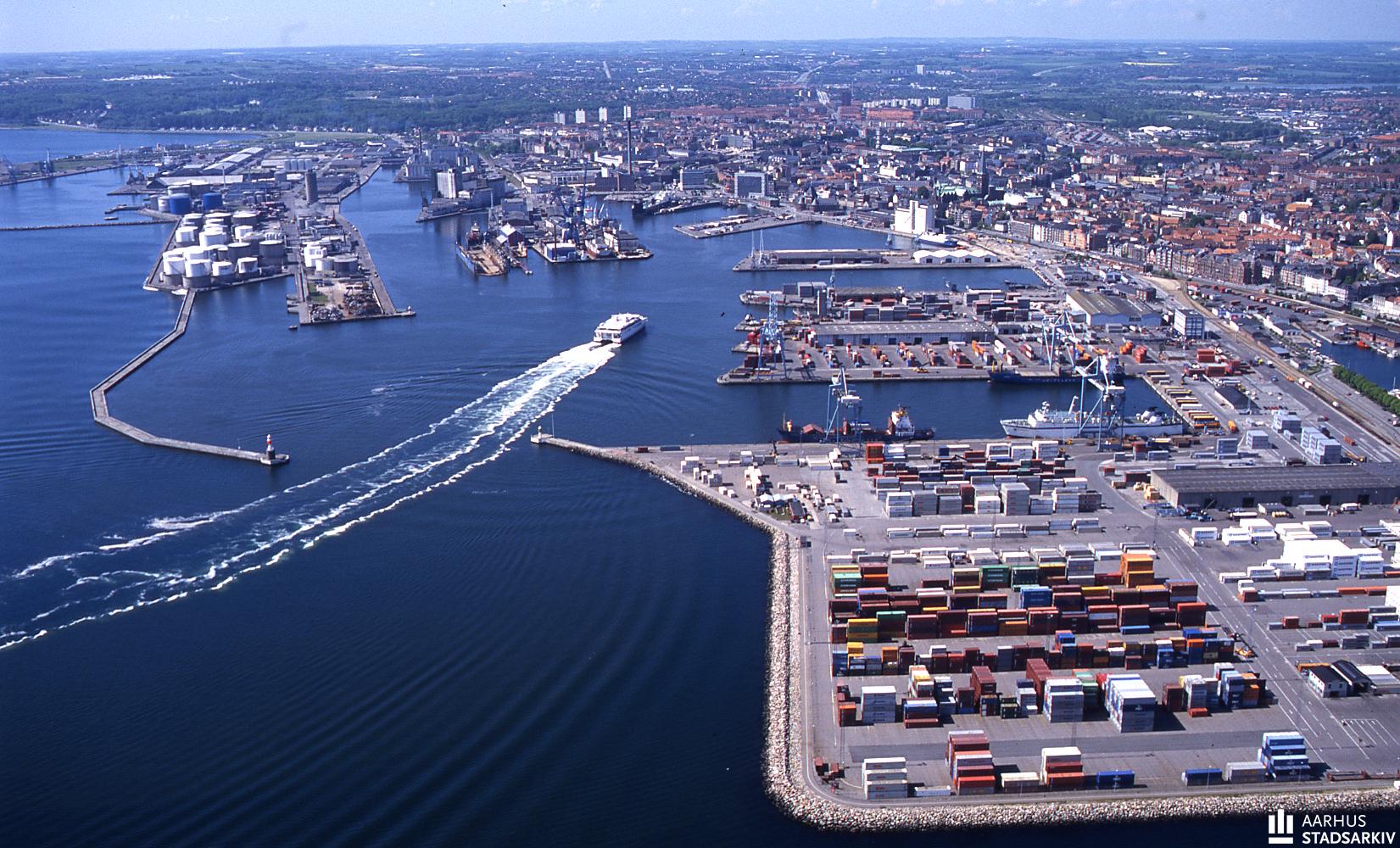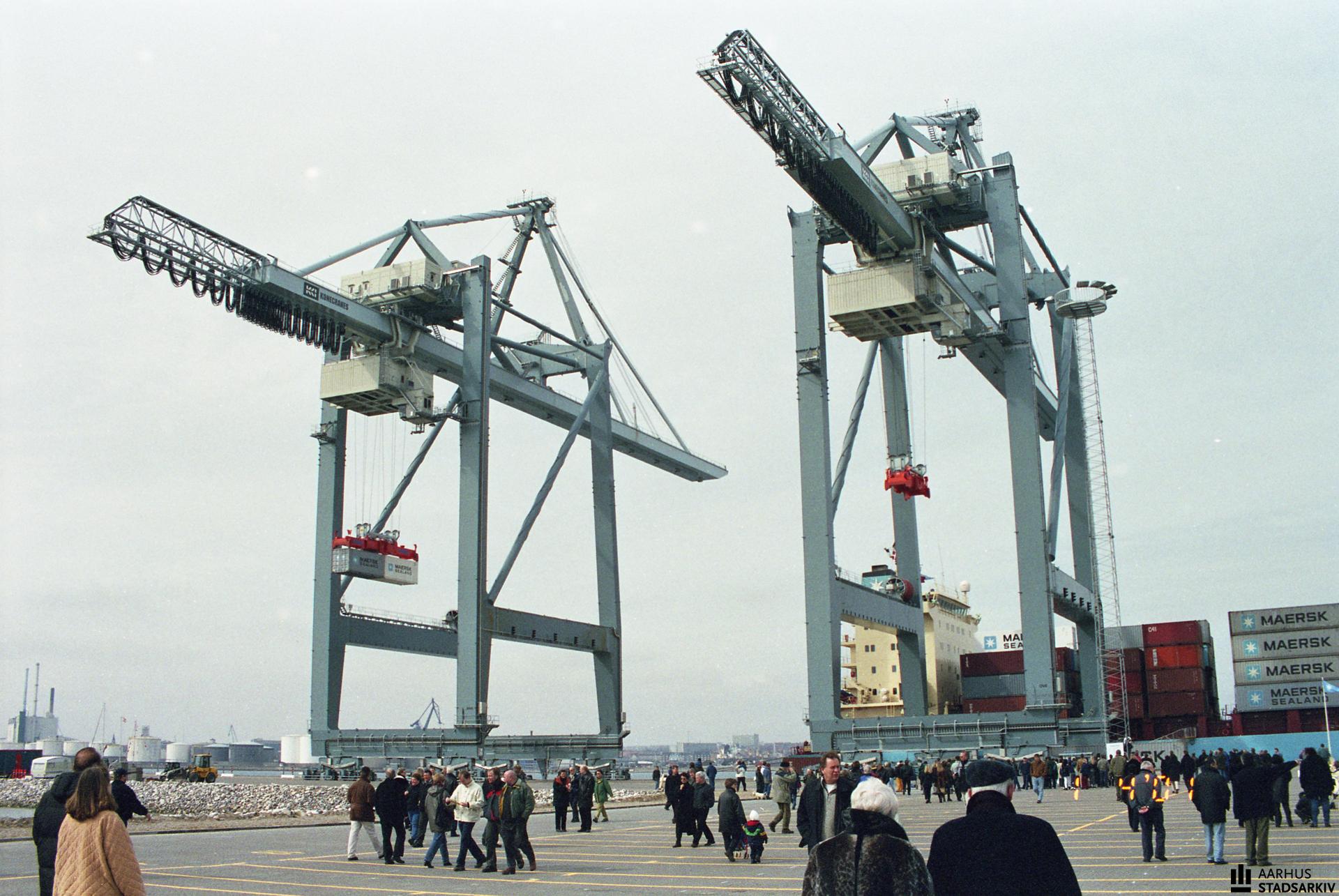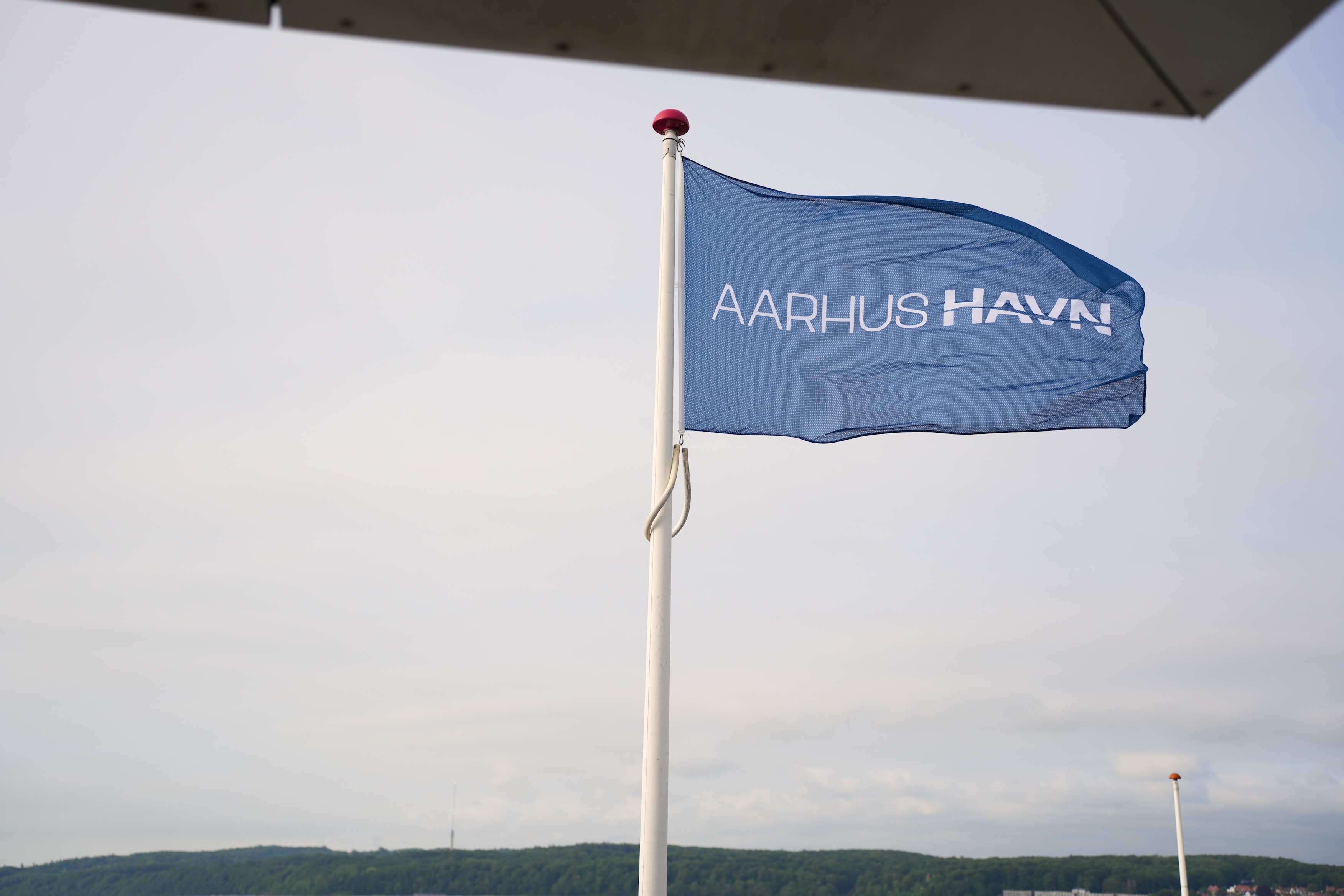History of the Port of Aarhus
Our history dates far back, all the way to 1854 when the harbor grew out of the river and became Aarhus Havn. Much has happened over the years

1845
Establishment of Kysthavnen
The port moves from the river in Aarhus to the coast in the area we now call Mellemarmen. The establishment of Kysthavnen with deeper water depth means that steamships can now dock. This eliminates the reliance on wind for navigation, ensuring stable trade in the city.
The new coastal port quickly attracts Jutland's largest merchants, who themselves build and pay for the port. At this time, Kysthavnen primarily imports coal and iron, and exports mainly grain.
1862
Construction of the Railway Connection
The railway connection to the port is constructed, making Aarhus the center for trade between Jutland and abroad – especially England.


1900
Aarhus Grows to 50,000 Inhabitants
The population increases from around 5,000 to over 50,000 from 1840 to 1900, making Aarhus larger than both Randers, Aalborg, and Odense, becoming Denmark's second-largest city. The population growth is mainly due to the expanding business sector and the demand for labor.
1905
Business Growth in Sydhavnen
Aarhus Oliefabrik moves from Bruuns Gade to Sydhavnen. With 500 employees, the oil factory accounts for over 10 percent of Denmark's exports (equivalent to Novo Nordisk today).
Power plants, a pig slaughterhouse, and the electricity service also open in the port area, creating even more jobs.
At the beginning of the 20th century, Port of Aarhus primarily imports feed, timber, and coal and still exports mainly grain.


1935
Aarhus Reaches 100,000 Inhabitants
Aarhus Municipality reaches 100,000 inhabitants, consolidating its position as Denmark's second-largest city.
1938
Construction of Oliekajen
Oliekajen is constructed, allowing for efficient and streamlined loading and unloading of ships carrying liquid bulk. At this time, oil is crucial for driving the industry forward nationwide, and with the oil quay, the Port of Aarhus establishes itself as an important hub for energy supply. The need for liquid bulk creates jobs in the port area and attracts more people to the city.


1958
Establishment of the Container Terminal
The container is invented in 1958, and the Port of Aarhus quickly invests in it, leading to the establishment of the container terminal in the area now called Aarhus Ø. Standardized containers provide significant advantages for businesses, as they can transport goods efficiently and without major damages.
Additionally, standardized containers provide better conditions and are safer to work with for port workers. Previously, goods of this type were placed on pallets and transported on roll-on/roll-off ships, as is still the case in most other ports at this time. Investing in containers maintains the growth of the Port of Aarhus during a period when other ports are declining.
1973
Multiterminal
The Multiterminal is primarily used for bulk cargo, initially referred to as the Coal Terminal. Power plants are a crucial energy source in Denmark, which is why the Port of Aarhus imports millions of tons of coal annually through the new area.
Later, it was decided to use less coal, and the space was quickly used for feed instead. Today, DLG still uses the area for fixed bulk.


1997
Relocation of the Container Terminal
The container terminal is relocated to Sydhavnen, where there are better connections to the railway and motorway. Additionally, there is a more efficient crane setup on the quays with deeper water depth. This is crucial for maintaining agreements with partners such as Maersk.
The outer part of the port is built, where the Port of Aarhus headquarters is located today.
2005
Port of Aarhus transfers 600,000 square meters to the city
In 2005, Aarhus Municipality and the Port of Aarhus reached an agreement on the phased transfer of approximately 600,000 square meters of port land for commercial use, to be redeveloped into new city areas instead.
For example, Dokk1 was built on the former Honnørkaj. Navitas and Bestseller are located on the former Pier 2, while Pier 4 became what we today know as Aarhus Ø. The 600,000 m² also included the areas now home to Toldboden and Pakhus 13, as well as the Fishery Harbour, the Wooden Ship Harbour, and the Marina, which were also transferred to Aarhus Municipality.
Photo: Jens Tønnesen / AarhusArkivet.dk


2008
Current container terminal completed
In April 2001, the current container terminal opened in a smaller version at the then brand-new East Port, where only the outermost part of today’s terminal had been established. The opening was marked by an inauguration event, where citizens were invited all the way out onto the terminal.
The next stage of the East Port and container terminal expansion began in 2005, and by the end of 2008 the terminal was completed, appearing largely as today – apart from the cranes and the technology on site.
Photo: Leif Thomsen / AarhusArkivet.dk
2016
The Port of Aarhus moves into new headquarters
At the beginning of 2016, the Port of Aarhus inaugurated the new Port Centre at the East Port and moved into its new headquarters.
Previously, employees had been spread across several locations around the port area, but the Port Centre brought Port of Aarhus's staff together under one roof. The building’s various office spaces also became home to several port-related companies that leased premises in the Port Centre.


2018
First part of the Omniterminal put into operation
The first section of the newly established Omniterminal was put into use in 2018, providing 450 metres of new quay. In the following years, warehouses were constructed on the terminal, along with storage areas for bulk cargo and other port-related activities connected to dry bulk.
The completion of stage 2 of the Omniterminal will begin in the autumn of 2025, adding a further 430 metres of new quay.
2020
The ferry terminal moves to the East Port in Aarhus
Until the autumn of 2020, Aarhus’ ferry terminal was located at Pier 3, to the right of Aarhus Ø. However, a request from Aarhus Municipality to use the port area for city development and to reduce congestion in the city centre led to the relocation of the ferry operations to the East Port, where an entirely new terminal was established.
The new ferry terminal has resulted in improved facilities and access, making logistics to and from the terminal more efficient.


2023
Denmark's first onshore power facility for cruise ships
In the summer of 2023, Port of Aarhus opened Denmark’s first onshore power facility for cruise ships. Since then, visiting cruise ships have been able to switch off their diesel engines and instead connect to the facility to receive electricity. In 2025, around 80 percent of the ships chose to use shore power when docking at the cruise quay.
In the autumn of 2023, the Port of Aarhus introduced a new fee model, making it more expensive for cruise ships to call at Aarhus if they do not use the onshore power facility.
2025
Port of Aarhus is now a joint stock company
On 1 April 2025, the Port of Aarhus converted into a joint stock company.
This change was driven by the port's significant growth over several years. In order to support continued development and create better business opportunities, the Board of Directors of Port of Aarhus requested the Aarhus City Council to transform the Port of Aarhus into a joint stock company.
A political majority in the City Council approved the change at the end of 2024, and on April 1, 2025, the Port of Aarhus was oficially converted into a joint stock company.





